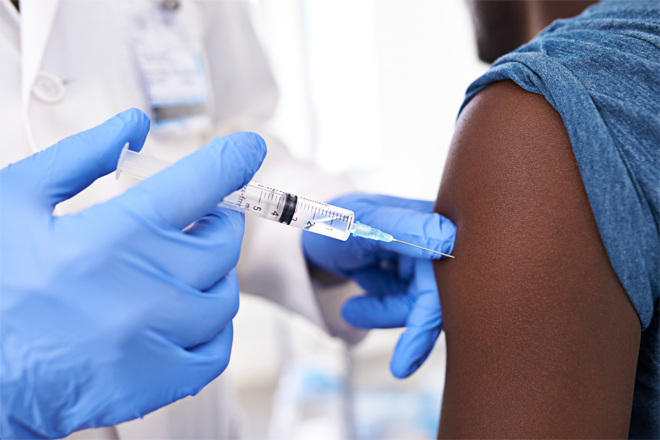
Tetanus, also known as lockjaw, is a rare disease caused by bacteria called as Clostridium tetani. The bacteria enter the body through cuts or puncture wounds and produce a specific toxin that affects the function of the nerves, leading to severe muscle spasms in the abdomen, stomach, neck, and extremities. The name lockjaw comes from the fact that spasms in the face and neck lead to the inability to open the mouth. Tetanus is extremely dangerous and fatal in up to 30% of cases.
Tetanus is not contagious and therefore cannot be acquired from someone who has it.
Symptoms of Tetanus
The first signs of tetanus can appear anywhere from three days to a few weeks after the initial infection. However, on average, it takes about a week for symptoms to appear. As previously mentioned, the very first sign will be a bit of muscular stiffness in the jaw. The stiffness will spread into the neck area, extremities, and abdomen. Other symptoms include difficulty swallowing, sweating and fever.
The Tetanus Vaccine
The tetanus vaccine is a toxoid, which means it protects the body against the toxins produced by the bacteria. The vaccine was first developed back in the 1920s and quickly became routinely used as part of the childhood immunizations in this country after World War II.
The tetanus vaccine is considered to be 100% effective in preventing tetanus and typically administered to children in the form of the DTap vaccine, which also protects against diphtheria and pertussis. Your doctor also has the ability to give the tetanus toxoid in combination with the diphtheria vaccine alone in both the adult (Td) and pediatric (DT) formulations.
Infants are typically given the DTaP vaccine on a schedule of 4 doses at 2, 4, 6, and 15-18 months of age. Another dose should then be given between the ages of 4 to 6 years. After that, booster shots are recommended every ten years because the levels of antitoxin in the body decrease over time.
When Do You Need to get a Tetanus Shot?
Most adults never bother to keep up with their tetanus boosters. And then they sustain some kind of injury and suddenly realize they need to get a tetanus shot and quick!
Here are some things to consider that will help you determine whether you need to get a tetanus shot:
A Contaminated Wound
It’s one thing to slice your finger while cutting a bagel in your clean kitchen, it’s another thing to walk barefoot through the park and suddenly slice your foot on a dirty piece of broken glass. Any wound that is visibly contaminated with dirt, dust, soil, or animal feces will require a tetanus shot for precaution.
Puncture Wounds
Maybe you weren’t walking barefoot through the park, maybe you had on a nice pair of flip-flops, but because you didn’t see that little board with the rusty nail sticking straight up, your foot and your flip-flop both received a nasty puncture wound. Other objects that can easily cause puncture wounds are wood splinters, needles, and human or animal bites.
Burns
You often hear about needing to get a tetanus shot with a cut or puncture wound, but it’s equally important to receive one after a significant skin burn. Second and third-degree burns are at higher risk for developing an infection.
Crush Injuries
No, we’re not talking about the broken heart you receive when the girl you’re crushing on doesn’t like you back. A crush injury happens when any part of your body gets, well, crushed between two heavy objects or when a heavy object is dropped onto a part of your body. The damage to the tissue is very susceptible to an infection.
Necrotic Tissue
Wounds that involve necrotic, or dead, tissue are at risk for infecting the surrounding area. The tissue, as in the case of gangrene, has no blood supply, which makes it increasingly susceptible to infection.
Workplace Hazards
Some occupations bring employees in direct contact with certain pathogens that the general public would generally not encounter on a typical workday. These occupational risks must be addressed through occupational vaccinations.
Healthcare and social care workers such as doctors, nurses, and physiotherapists are vulnerable to many different pathogens. Carpenters, contractors, and builders are also highly susceptible to contracting tetanus while on the job. In all of these instances, safety procedures are extremely important.
It is the responsibility of the employer to assess the potential risks of exposure to disease and meet necessary health and safety guidelines. Employers are also legally responsible for providing their employees with any and all information and/or training necessary to minimize the risk of exposure to tetanus and other diseases.
Both employers and employees may consult the Occupational Health Service (OHS) with regards to any necessary immunizations. The OHS is an authority on the use of occupational vaccines and specialize in preparing vaccination programs for workplaces that need them.
Final Thoughts
Regardless of where you work, if it has been more than 10 years since your last tetanus booster, it is recommended you contact your primary care physician to bring your immunizations up to date. If you did not receive the tetanus immunization as a child, it is also recommended you receive a series of three tetanus immunizations now as an adult.
Photo Credit: iStockphoto.com

Nice Article
Thank you, Nathan.